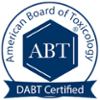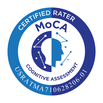n-Hexane which has been implicated in Parkinsonism since 1989 has been recognized as a neurotoxicant for decades but it remained wrongly classified as “suspected neurotoxicant” until the European Chemicals Agency (ECHA) launched a process to have it reclassified as “proven neurotoxic for humans.” This new classification will be effective in Europe in June 2023.
Read the entire story by Marc Cerveray published in Food Ingredients First
Link to Pezzoli et al article in PubMed
 RSS Feed
RSS Feed

